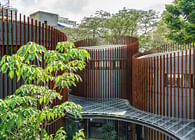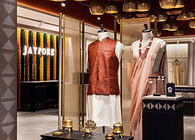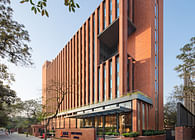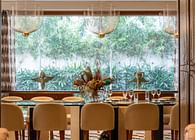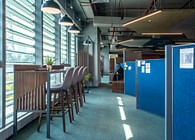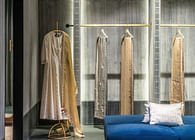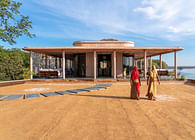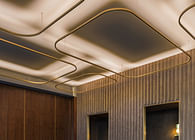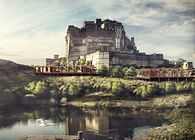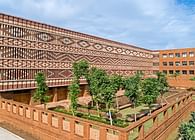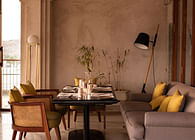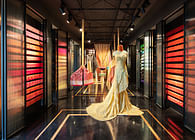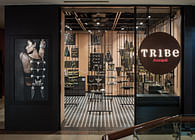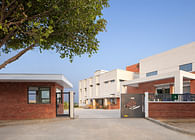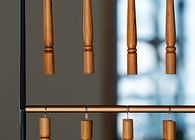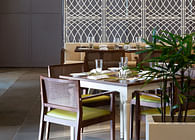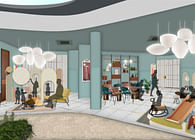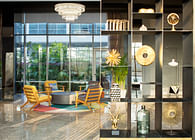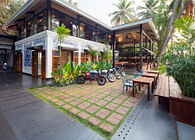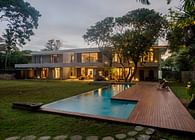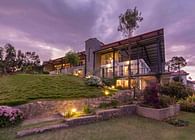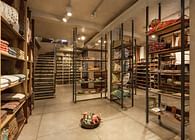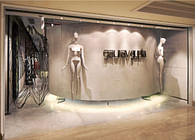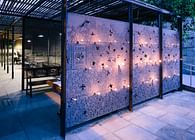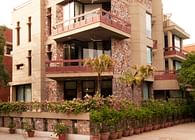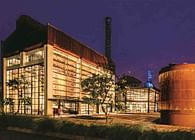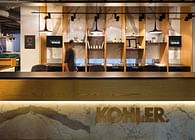
New Delhi, IN
Located in a corner plot in quiet, green neighbourhood in south Delhi, Frame on a House is a contemporary adaptive re-use residential project that explores its context of old-new vocabularies and inside-outside relationships to build a narrative of ‘frames’ and connections.
Built for a leading contemporary artist, the brief was to re-use existing spaces on the uppermost floor of athree-storied house, which she has recently moved into and now shares with her artist parents, and adapt them to create an independent one-bedroom apartment. While an internal staircase connected all floors, the client wanted a completely separate access with a lift, besides quarters for her house help.
The independent floor with its expanded footprint is designed to sit on the house like a light attachment; addressing the area’s limited building regulations. An external, mild steel covered staircase and lift block has been plugged to the building in response to the provision of an independent entry. Borrowing from the existing colour palette of the building’s openings, the structural framework of red cantilevered lines and columns imparts a strong graphic identity to the new insert; blurring yet linking previous and current constructions.
Even though the singular purpose of the staircase and lift block is to create independent access, also to the separate studios of the artist couple, it has become a junction of social activity with constant movement and conversations between floors. Natural light pours into the space from the two transparent sides and the roof, enlivening all pockets of the stairwell and enclosing views of the surrounding greens.
For the client’s apartment on the third floor, while the existing grid of the layout was retained, the spaces have been reconfigured to open up areas and create a seamless flow. Frames have been created to capture views of natural and created greens, infiltrating the interiors with light and linkages to the outside.
Crafted through the honesty of materials and focus on details, the subtlety of the new architectural language is kept in resonance with the rest of the house. Exposed tukri slab construction reflects the spatial extensions on the ceiling, visually demarcating the old and new purposes and materials. A polymer concrete floor poured over the existing floor is used to fluidly tie the entire interior together.
Walls were broken down to create an open kitchen and dining space with contemporary storage units in oxidised mild steel acting as porous dividers. Designed by The Mangrove Collective, the shelving allows for the adjacent spaces to be visually connected.
The living space is flanked by a balcony and verandah overlooking and infused with greens: the front towards a park and the rear towards a beautiful tree in the court below. White walls provide the ideal canvas to the art collections and the artist’s own work.
The previously-constructed internal staircase has been terminated at this floor – providing space for a walk-in closet from the bedroom, and a large bathroom suite looking into an enclosed green court.
The existing courtyard at the rear of the building was also made the focus of the intervention, with the addition of metal balconies projecting outwards so that the living spaces on the first and second floor can enjoy views of the lush greenery. Deriving its distinct character coming from the treads comprising a series of metal plates that fold over themselves and form the risers, a sculptural spiral staircase in the rear verandah leads up to the green terrace, which with its stunning views of surrounding monuments and dense greenery becomes an ideal space to entertain in conducive weather.
A series of red frames, of doors, windows and shelving, percolates the external colour references within and is accentuated with vibrant pops of yellow.
Status: Built
Location: Delhi, IN
Firm Role: Principal Architect





